In Excel, with data organized like so:
Bare NP Singular-Marked NP Plural-Marked NP
BrP Speakers AmE Speakers BrP Speakers AmE Speakers BrP Speakers AmE Speakers
Plural Interpretation 0.005747126 0.006896552 0.194117647 0.124567474 0.872093023 0.985815603
Plural & Singular Interpretation 0.649425287 0.910344828 0.029411765 0.051903114 0.127906977 0.014184397
Singular Interpretation 0.344827586 0.082758621 0.776470588 0.823529412 0 0
I am able to produce a stacked barchart that looks like this:

Is there an easy way to reproduce the way that the x-axis is partitioned into the separate conditions (i.e., "Bare NP", "Singular-Marked NP", and "Plural-Marked NP") using R?
All that I can come up with at the moment is this:
pluralInterp <- c(0.005747126,0.006896552,0.194117647,0.124567474,0.872093023,0.985815603)
pluralAndSingInterp <- c(0.649425287,0.910344828,0.029411765,0.051903114,0.127906977,0.014184397)
singInterp <- c(0.344827586,0.082758621,0.776470588,0.823529412,0,0)
a <- rbind(pluralInterp,pluralAndSingInterp,singInterp)
colnames(a) <- c("Bare NP ~ BrP Speakers",
"Bare NP ~ AmE Speakers",
"Singular-Marked NP ~ BrP Speakers",
"Singular-Marked NP ~ AmE Speakers",
"Plural-Marked NP ~ BrP Speakers",
"Plural-Marked NP ~ AmE Speakers"
)
barplot(a,
col=c("blue","red","purple"),
ylab="Frequency of Interpretation",
xlab="Form of NP and Native Language",
main="Frequency of BrP and AmE Interpretations of NPs in Neutral Environments"
)
Which produces the following graph:

